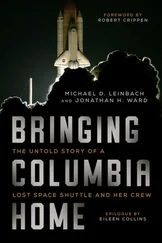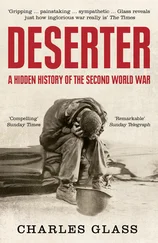It was not possible to substantiate the type of gas used as ‘no proper autopsies on the flight deck crew were carried out’. Only the body of Brigadier Wassom was examined before the authorities at the military hospital at Bahawalpur were ordered not to perform autopsies. He had been in the VIP capsule, not on the flight deck, and all that could be deduced was that he had not suffered injuries from any explosion prior to impact. Neither had he breathed in any toxic fumes, as would have been the case with a fire before the plane hit the ground. The instructions not to perform autopsies came as a shock, as it was a routine procedure. Later, it was stated that all the bodies had been completely destroyed in the fire, rendering autopsies impossible. When General Akhtar’s family wanted to see his body before burial, they were refused, on the grounds that it was totally disintegrated, with nothing of any substance left.
The reason was not believed. Witnesses at the crash site said that, while the passengers at the rear of the aircraft were virtually totally destroyed, this was not the case with the senior officers in the capsule or the crew in the cockpit. The condition of Wassom’s body did not prevent thorough examination. Zia’s Holy Koran survived, charred but easily recognisable, as did Akhtar’s uniform cap, together with his personal file cover with its crest, and the words ‘CHAIRMAN JCSC’ still clearly readable. A US official was to announce that the bodies were not available for autopsy as Muslim custom requires burial within 24 hours. While this is true in normal circumstances, it never applies within the Services, as shown by the Army medical staff at Bahawalpur when they automatically made preparations to proceed.
The Board had no members qualified to undertake criminal investigations, but they did record that, “although 31 death certificates have been received no physical body count was carried out at the wreckage site or in the hospital. The possibility of someone not boarding the aircraft at Bahawalpur cannot be ruled out”.
Although the ISI was initially tasked with investigations, its efforts appeared less than enthusiastic. Service personnel at Bahawalpur were surprised that they were not subjected to rigorous interrogation. The discovery of a murdered policeman nearby was not successfully investigated, while the efforts of interrogators to extract a confession from the pilot of PAK 2 were bizarre, as well as unrewarding. A recent killing of a Shiite leader had been blamed by his followers on Zia. Both the pilot of PAK 2 and co-pilot of PAK 1, Flight Lieutenant Sajid, were Shiites, so it was suggested that the PAK 2 pilot had persuaded Sajid deliberately to crash the plane in a suicide mission. Only when the Board of Inquiry showed that such actions would have been physically impossible was the unfortunate man released.
So it was an act of mass murder. The likely method was pinpointed by the Board, although the culprits remained unidentified. As explained above, many people, organizations, even nations, had powerful personal or political motives for wanting Zia removed. What has gone before are the facts as far as I have been able to ascertain them; what follows are my own comments on how it might have been done.
First, I will deal with the point sometimes made that the violent roller-coaster movements of the aircraft indicated a last despairing attempt by somebody to fly the plane. If it had been a crew member he would certainly have shouted some warning over the radio, but there was absolute silence. Assuredly the crew were incapacitated. Afterwards it was suggested that the voice of Brigadier Najib Ahmed had been heard calling out to the captain, and that he had managed to get into the cockpit where his cries had been picked up on the radio as the pilot’s hand was still locked to the switch. One version of this theory has Najib actually trying to control the aircraft. I believe this is nonsensical. Once PAK 1 got out of control there was no way anybody could physically leave his seat and struggle forward, climb the steps, open the door and get onto the flight deck. Finally, there is no mention of anyone hearing Ahmed’s voice in the Board of Inquiry’s report. Had such a thing happened it would have been there. The erratic climbing and plunging has another explanation. According to a Lockheed C-130 expert, if this type of aircraft flies unattended its nose rises steeply, a mechanism in the tail reverses this and the plane dives. The plane over-corrects, again with the same results. This might occur several times before a crash. The technical term for this pattern is ‘phugoid’.
I believe the primary air was to assassinate Zia. The original plan may have been to murder Akhtar as well, and at the same time, but I doubt it. It was really asking a lot to kill them simultaneously. Akhtar was detested by many senior officers, he was near the top of KHAD’s his list, and he was assumed by many to be ready to step into Zia’s position if he died. Perhaps it was part of the plot to get him on board PAK 1 that afternoon, but if so it was a very last-minute arrangement. On balance I feel his death was probably regarded as an unexpected bonus by the killers.
Certainly the use of a plane crash was selected as the means because the chances of evidence to incriminate the plotters surviving would be minimal even if it was later established as sabotage. The use of ultra-sophisticated poison gas, capable of killing four crewmembers simultaneously, points to the involvement of at least one intelligence agency. The problem would be the source of the gas. Pakistan would be unlikely to have it, but the KGB and CIA would surely have access. Both KHAD and RAW could have obtained it through their Soviet contacts. If the conspirators were among the Pakistan military then it is conceivable that the CIA could have supplied it, albeit for another purpose.
Also highly probable is the involvement of the Pakistan military, certainly at comparatively junior level, probably at senior as well. Neither the KGB nor KHAD or RAW could have halted the autopsies at a military hospital. With military involvement, the obtaining of the President’s flight schedule becomes comparatively simple, as does getting around security at airports, and the actual planting of the device inside an aircraft.
The planners must have been getting desperate as week after week passed without Zia showing any inclination to use his plane. The tank demonstration was not likely to interest him without considerable persuasion, and was probably used as a last resort. The problem was to convince him to go without making him suspicious. Quite possibly somebody convinced General Durrani, the tank division commander, that Zia’s attendance would add to the importance of the event, and was in Durrani’s own interests. His subsequent success in inducing the President to go could have been entirely innocent.
We must assume that the lethal gas device had already been obtained while awaiting an opportunity, and the person destined to plant it given his instructions. He was undoubtedly in the military, probably a technician within the Air Force, possibly, if my theory is correct, from No.6 Squadron PAF. This is the unit that operates the C-130 transports out of Chaklala a few miles south of Islamabad. A decision had to be taken as to when to plant the gas. Once it was confirmed that Zia would fly to Bahawalpur the choice lay between doing it there or at Chaklala, when it was clear exactly which aircraft would be PAK 1.
Most theories suggest the planting of the device was done at Bahawalpur, but I believe it much more likely to have been Chaklala. At Bahawalpur there would be no Air Force personnel except the crew, so none of them would do it—unless they were willing to go down with the plane. How could the plotters be sure an Army man could get on the guarded aircraft? The device had to be put in the cockpit which involved climbing up the steps, through the door, on to the flight deck. This was virtually impossible for a soldier, and certainly did not happen with the mango delivery. The crew working on the cargo door perhaps? But they were to fly back to Islamabad. Neither they nor the security guard would allow a soldier or civilian into the aircraft, let alone go climbing up into the cockpit. I cannot say with absolute certainty it was not done at Bahawalpur, but if it was it was a highly risky operation with the odds against success.
Читать дальше












